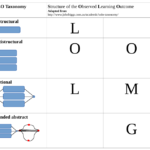Many concepts in education are often so vaguely formulated that they can be easily conflated. Phillipson and Wegerif (2017) claim that
“To understand any concept means to distinguish it from other concepts, and that requires holding different points of view together in thought, and contrasting them.”
This often leads to the lack of any need to have a dialogue with others as no cognitive conflict occurs and we agree on an unproductive surface level. “Science is all about inquiry so science teaching should also help students in inquiry.” Who would not agree? However when we start to critically examine what inquiry, science and teaching mean then we must confront some conflicts.
The ideas of Neil Phillipson and Rupert Wegerif in their book Dialogic Education:
Mastering core concepts through thinking together gave me many valuable insights into my own ideas and practice. I had thought that the methodology and practice of programmes such as C.A.S.E (now renamed as Let’s Think), Philosophy for Children and the conceptual change methods developed over decades by constructivists such as Rosalind Driver, Phil Scott, Ken Tobin, Peter Fensham, Richard Gunstone could easily combined into a personal pedagogy.
Especially the principles put forward by Posner, Strike, Gerzog and Hewson in their Accomodation of a Scientific Conception:Towards a Theory of Conceptual Change had been a major guide in my thinking as a teacher.
To briefly summarise their theory it states that Learners need to:
- be aware of their own concepts
- to become disssatisfied with their own ideas
And then be presented with
- intelligible and
- fruitful alternatives.
I had used these ideas and the 5 pillars of Cognitive acceleration and often found a tension which usually was based on an understanding of my own concept of what I wanted to achieve as a teacher.
Did I actually want the students to explore the epistemic issue of how scientists knew or what they decided they knew (as a best explanation of the available data).
So an example in teaching enzymes in IB Biology, I had to decide if my key goal was to explore that the lock and key model of enzyme activity was very useful, but inferior in its powers to the induced fit model to account for observations and explain the lowering of activation energy. I also had to ,for this discussion, put the purely descriptive and declarative objectives to one side. This is a typical scenario in many science curricula. So a clear dialogue about what had to be” learned” and what had to be understood had to continually take place. I have tried to persuade many student s that both re-inforce each other and will help them in resonding to the command terms of the extended written response questions. Teaching to the test is here teaching for a good understanding of the nature of science.
Using these idea over many years has consistently reminded me of how massive an undertaking developing concepts is, especially taking in the various accounts of how long conceptual development took in the history of scientific development.
So I took some of the ideas Neil Phillipson and Rupert Wegerif used to explore whether my own understanding of how Dialogical Education, Cognitive Acceleration, Conceptual change theory and Philosophy for Children was coherent and differentiated
I replaced force with inquiry pedagogy and tried to adress some of the claims in Dialogical Education.
“When we say that a child understands something, a concept like ‘force’, for example, we mean that they know how to use the word ‘force’ appropriately.3
So when a teacher says I am teaching students to inquire they may claim I am clear that this means they need some tools that will help them choose what is worth inquiring into and how they might plan how to do this. A dialogical opponent may ask “how did you guide them to what was worth inquiring into?” If I have a strong concept of inquiry pedadagogy would I not ask this question myself?
“They can answer unexpected questions about force and forces that we ask them in different contexts, and they can apply the concept of force to problems in a range of situations
So given important educational goals such as learning fixed declarative goals e.g various “facts”, number systems, conventions and other symbolic systems, they will still be able to ask students to explore why did we agree on these facts rather than others, what advantages do these systems have ? Again a dialogical understanding/opponent would ask how can this intellectual activity be explored without robbing the security of “factness”?
“Dialogue, or some form of question and answer, is essential to assessing mastery in the use of a concept. Dialogue is also essential to acquiring that mastery in the first place.”
Dialogue however is very demanding of self knowledge and demands a very good knowledge of the students one is engaging in dialogue. Interestingly it is the optimum method (regradless of the hard intellectual work involved) to achieve both.
Implication for teaching to the test
“If we want to teach children how to be better at thinking when they are faced by a challenge on their own, perhaps the challenge of an individual test, then, paradoxically, the best way to do this is to teach them how to be better at dialogues.”
References
3 Lemke, J. L. (1990). Talking Science: Language, Learning and Values. Norwood, NJ: Ablex Publishing.
Phillipson, N and Wegerif, R (2017). Dialogic Education: Mastering core concepts through thinking together. London and New York, Routledge
